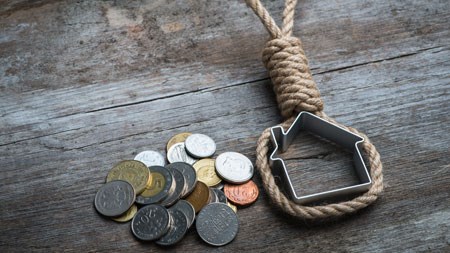Are aspiring home buyers scared to buy property currently? Well, they certainly seem to be a lot pickier these days. The demand/supply balance favours buyers and allows them more time to make a buying decision. It disadvantages sellers who need or want to trade out of their properties but battle to obtain their desired price. Potential buyers are constrained by significant increases in their cost of living, notably in the area of property-related rates and tariff increases such as Eskom costs, while high levels of indebtedness leave them vulnerable to any future interest rate increases.
The South African residential property market still suffers from very high levels of oversupply according to the FNB Valuer’s Market Strength Index, and the average time on the market hovers close to 19 weeks, a lengthy period compared with better times of a few years ago. Oversupply implies low growth in property prices, which can make it be difficult to break even when an owner tries to trade out of a property. These factors reduce the “safety net” of being able to trade out of a property when times get tough, and makes potential buyers a lot more cautious.
Consumers are a lot more cautious with their spending in tough economic conditions. They count the pennies and put a lot more effort into budgeting. In better economic and financial times, when financial pressure is less, decisions are made much easier and spending follows freely. Quality is often neglected in times of boom cycles. This is a well documented phenomenon in the investment world. In times of expansion, prices of investments (bonds specifically) trade in a narrow range. Contraction phases opens up yield spreads (increase price differences) as investors become more careful about their buying decisions.
Perfectly on cue, estate agents have started to report this phenomenon in the most recent FNB Quarterly Estate Agent Survey. They state that the average number of serious, interested buyers per property have increased from around 13 to 18 in the most recent quarter. This suggests that consumers are a lot more careful when looking at buying property. You may argue that there is a lot more stock on the market to choose from, but more available stock should lead to a decrease in average number of serious viewers per house, which has not been the case in recent times. Pricing realism does not seem to impact this. Percentage of sellers who have to drop their asking prices seemed to have remained high at above 80%for some time now.
Rises in food and petrol prices have recently increased pressure on the household sector’s finances. Mediocre economic growth since the 2008/9 recession has kept employment and household income growth weak. Uncertainty about rising consumer price inflation demands home buyers to consider building up higher buffers before entering the market.
Should inflation keep rising in line with expectations, the SARB might have to start increasing interest rates later this year. The general consensus seems to be that the first hikes might start coming through by November, as the SARB tries to keep inflation within the targeted band of 3-6% (up from 3.7 to 4.1 recently and still climbing). High indebtedness levels make interest rate changes very effective, and could put renewed strain on an already weak household sector.
However, the reduced confidence in the property market is not necessarily a bad thing. Sooner or later, we will have to start addressing high levels of credit and rebuilding buffers used up over the last two or three years. South Africa has a historically low savings rate that should show positive signs of improvement given current high levels of financial uncertainty. Therefore, low confidence levels may be exactly what is needed to improve those underlying “fundamentals”, and ultimately to prepare the way for a more sustainable housing market recovery a few years down the track.



